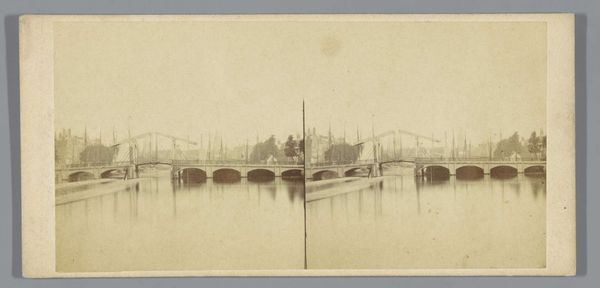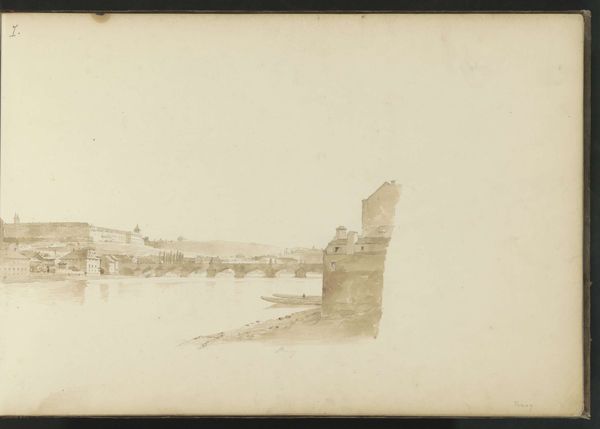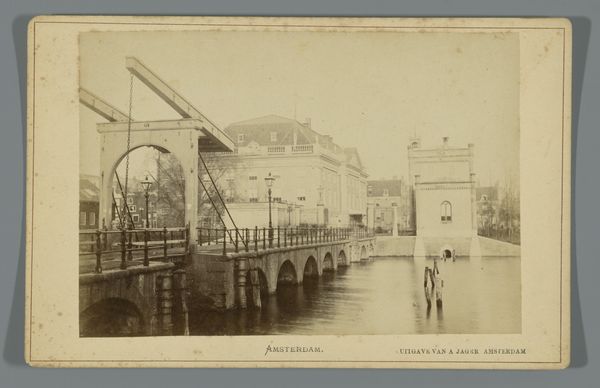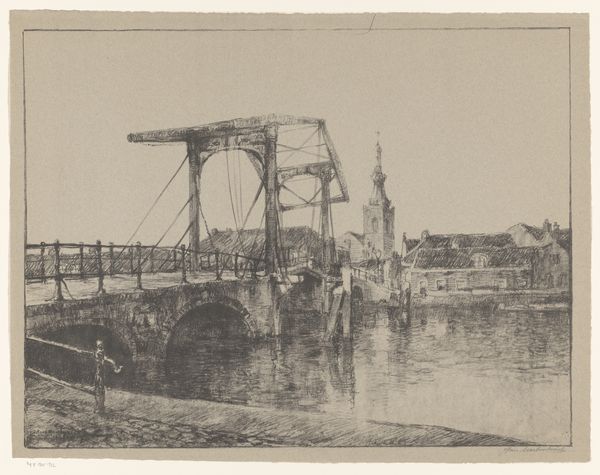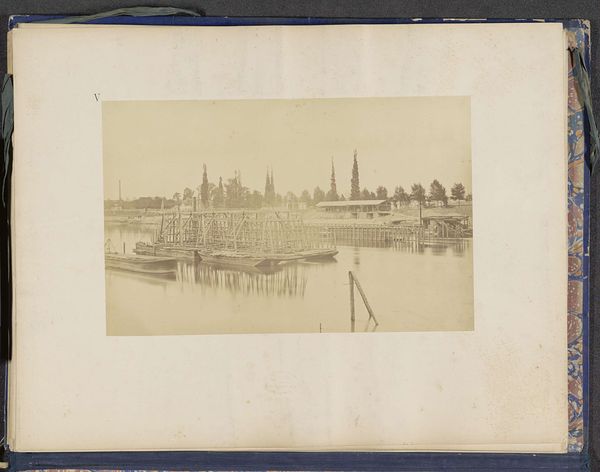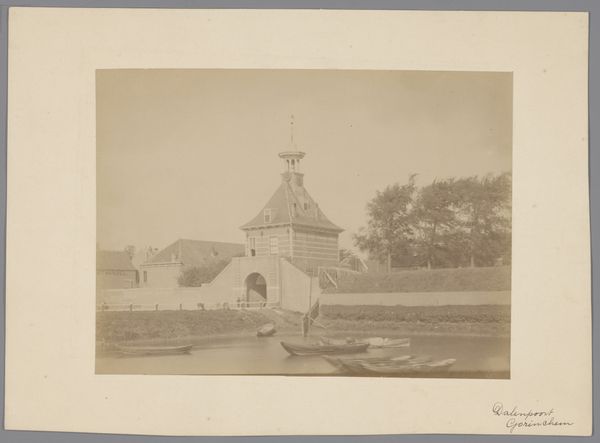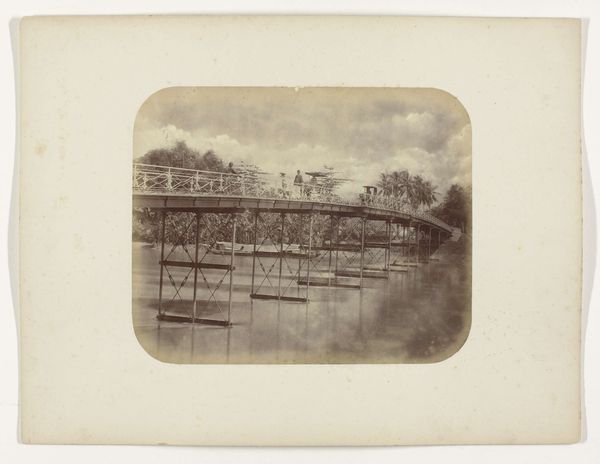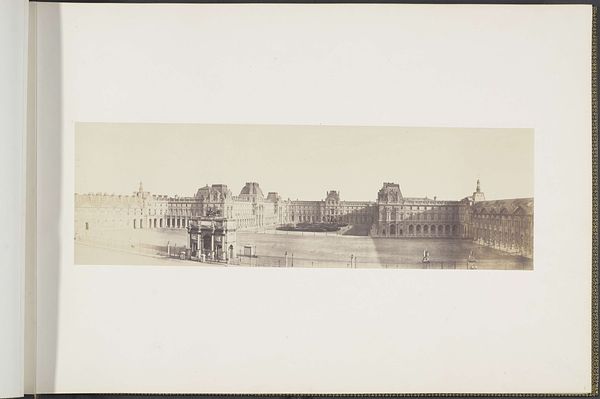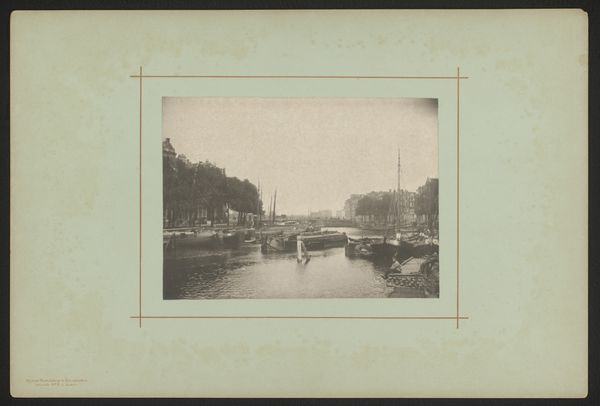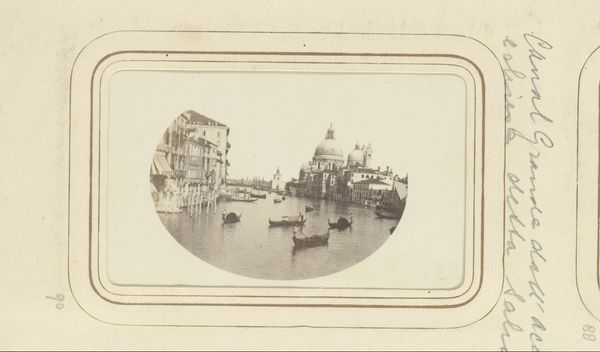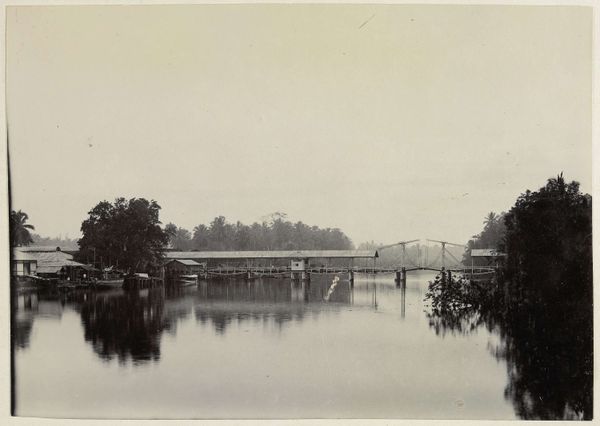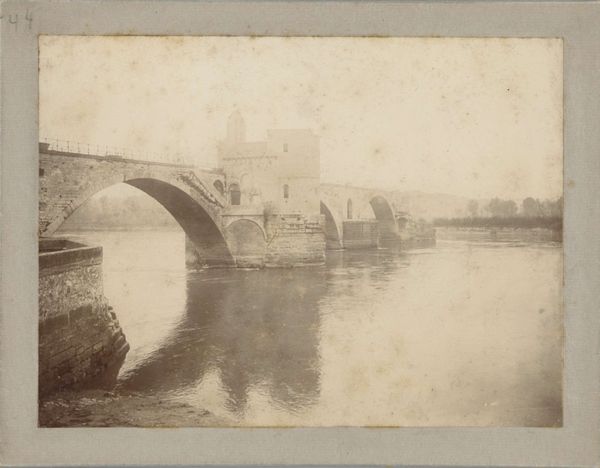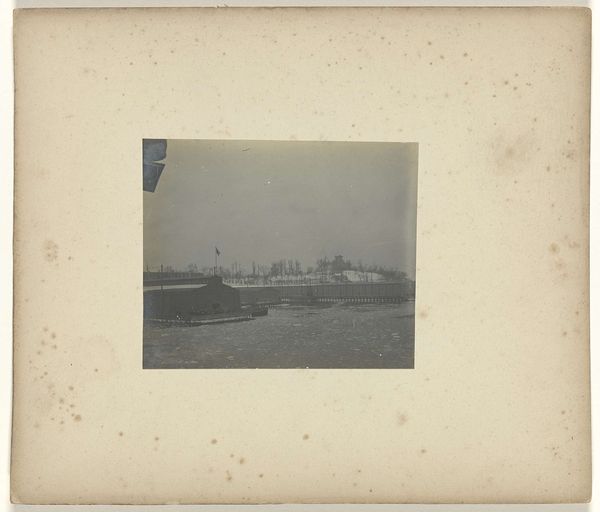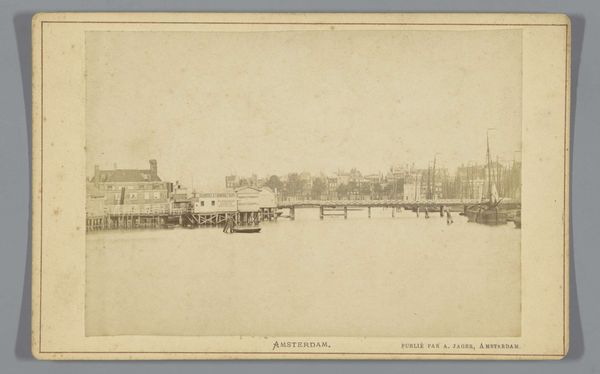
Gezicht op korenmolen 'De Hond' op het bolwerk Muiden bij Amsterdam 1852 - 1860
0:00
0:00
eduardisaacasser
Rijksmuseum
photography, albumen-print
#
landscape
#
photography
#
cityscape
#
albumen-print
#
realism
Dimensions: height 115 mm, width 93 mm
Copyright: Rijks Museum: Open Domain
Editor: This albumen print, "Gezicht op korenmolen 'De Hond' op het bolwerk Muiden bij Amsterdam," captured sometime between 1852 and 1860 by Eduard Isaac Asser, feels almost dreamlike, like a scene from a forgotten story. The reflections in the water are so clear, and the composition is very peaceful, yet also strong because of the mill in the background. What strikes you about this work? Curator: Well, it's fascinating to see a windmill depicted in such a self-consciously artistic way, and quite early in photography's history. Windmills, of course, were vital infrastructure. They quite literally powered the Dutch Golden Age through things like milling grains and sawing lumber for ships. How does the act of photographing such a commonplace structure elevate it to the realm of art and even political commentary? Editor: Political commentary? I wouldn't have considered that! Curator: Think about the societal role of photography at the time. It was just emerging as a medium accessible to the bourgeoisie. Who would commission or purchase such a work? Was it meant to simply capture a realistic depiction, or was there a layer of commentary on Dutch industry and pride subtly embedded within this serene photograph? Editor: So, you're saying the choice of subject itself, the working windmill, speaks to a certain national identity or even class pride? Curator: Precisely. The public display of this image would reinforce certain cultural values and potentially shape public perceptions of labor and national heritage, even ideas of technological advancements. Is it then merely an aesthetic choice, or a carefully crafted visual argument? Editor: That's given me a whole new perspective. I always viewed photographs from this period as just straightforward representations, but there's so much more happening under the surface. Curator: Exactly! By analyzing its display and reception, we begin to understand the social life of this seemingly quiet landscape and the subtle ways in which art interacts with society and politics. Editor: I'll definitely look at these historical photographs in a new light from now on.
Comments
No comments
Be the first to comment and join the conversation on the ultimate creative platform.
